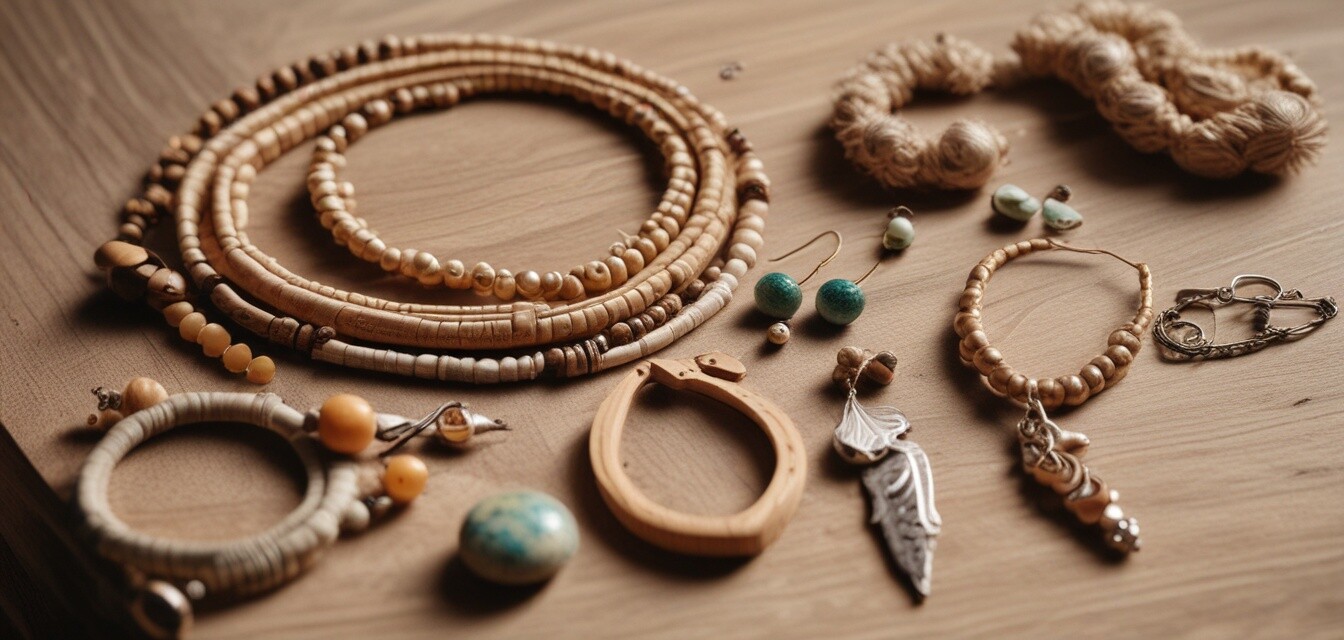
Jewelry Innovations: Biodegradable Materials
Key Takeaways
- Biodegradable materials are becoming integral in jewelry design.
- These materials reduce environmental impacts associated with traditional jewelry production.
- Exploring innovative materials like plant-based resins and organic substances is key to sustainable practices.
- Consumer awareness is growing around the importance of sustainability in the jewelry industry.
As the world aims for more sustainable solutions, the jewelry industry is witnessing an exciting transformation. The adoption of biodegradable materials is one of the leading innovations in jewelry production. This article delves into upcoming trends, environmental benefits, and what the future holds for biodegradable jewelry materials.
Understanding biodegradable materials in jewelry
Biodegradable materials are substances capable of being decomposed by natural processes, offering an eco-friendly alternative to conventional materials. In jewelry design, these materials can help minimize waste and reduce the carbon footprint associated with traditional jewelry production. Let's explore some common biodegradable materials used in the industry:
| Material | Description | Environmental Benefits |
|---|---|---|
| Plant-based resins | Resins made from organic plant materials that can replace petrochemical-based alternatives. | Decomposes naturally, reducing plastic pollution. |
| Recycled metals | Metals that have been reprocessed and reused, minimizing the need for new mining. | Reduces environmental degradation and energy consumption. |
| Wood and bamboo | Natural materials sourced sustainably to create beautiful pieces. | Biodegradable and supports sustainable forestry practices. |
| Natural fibers | Fibers such as cotton, hemp, and jute used in jewelry to add texture. | Biodegradable and often produced organically, reducing pesticide use. |
| Shells and stones | Natural gemstones and shells ethically sourced, adding beauty to designs. | Minimizes mining impacts and encourages responsible sourcing. |
Trends in biodegradable jewelry materials
As consumer preferences shift towards sustainable products, various trends are shaping the use of biodegradable materials in jewelry. Some of these trends include:
- Artisan collaborations: Artisans are utilizing local and biodegradable materials, creating unique pieces while supporting their communities.
- Upcycled materials: Turning waste materials into art, some jewelers are focusing on using discarded items to craft stunning jewelry.
- Transparency in sourcing: Consumers are seeking transparency in the supply chain, prompting brands to disclose their sourcing practices, particularly concerning biodegradable materials.
- Plant-based designs: Innovative designs embracing plant-based materials are becoming more popular, allowing for creativity without harming the environment.
- Personalized biodegradable options: More brands are offering customizable biodegradable pieces, allowing customers to create their sustainable jewelry.
The environmental benefits
The transition to biodegradable materials in the jewelry sector provides various environmental benefits. Understanding these benefits can help consumers make more informed purchasing decisions. Here’s an overview:
| Environmental Impact | Traditional Materials | Biodegradable Materials |
|---|---|---|
| Carbon footprint | High due to mining and manufacturing processes. | Lower, as they often utilize renewable resources. |
| Waste generation | Significant from non-biodegradable products. | Minimal as these materials decompose naturally. |
| Resource consumption | High due to extraction and production. | Lower since many materials are sourced sustainably. |
| Impact on ecosystems | Destructive from mining and extraction. | Less harmful as they encourage responsible sourcing. |
How to identify biodegradable jewelry
As a conscious consumer, knowing how to identify genuinely biodegradable jewelry is crucial. Here are a few tips to guide your purchasing decisions:
Tips for beginners
- Look for certifications: Seek brands that are certified for eco-friendly and sustainable practices.
- Research materials: Familiarize yourself with the types of materials that are considered biodegradable.
- Ask questions: Don’t hesitate to ask sellers about their sourcing and production methods.
- Support local artisans: Often, local artisans use biodegradable materials and promote sustainable practices.
- Check for transparency: Brands that are proud of their sustainable efforts will provide ample information about their products.
The future of biodegradable jewelry
The future of biodegradable jewelry is bright, with increasing recognition of sustainable practices. As innovation continues to drive the industry, you can expect to see more unique designs and eco-conscious materials entering the market. By supporting brands that prioritize sustainability, consumers can help foster a cycle of responsible craftsmanship and environmental preservation.
Pros
- Environmentally friendly and sustainable choice.
- Supports local artisans and communities.
- Reduces plastic and metal waste.
- Unique and creative designs.
Cons
- May have a shorter lifespan compared to traditional materials.
- Can be more expensive due to sourcing and production processes.
- Availability may be limited.
As you explore the world of jewelry options, consider visiting our Sustainability Practices blog category for further insights on responsible jewelry choices. Engaging in practices that emphasize sustainability will benefit not only your style but also our planet.
Innovative jewelry crafted from biodegradable materials is not just a trend; it represents a shift in how we perceive fashion and our responsibilities towards the environment. Be a part of this exciting movement by choosing sustainable and biodegradable options in your jewelry collection.